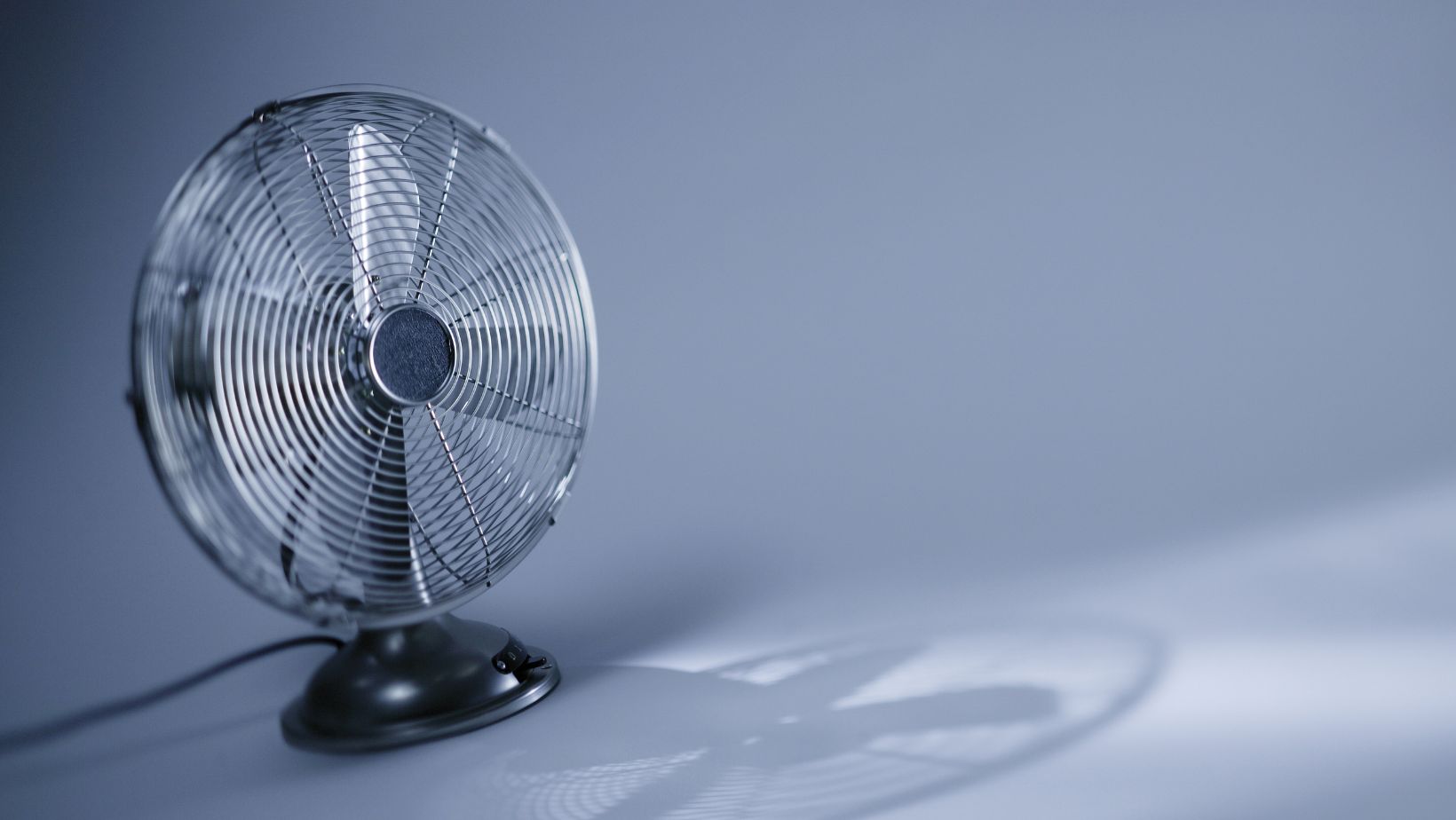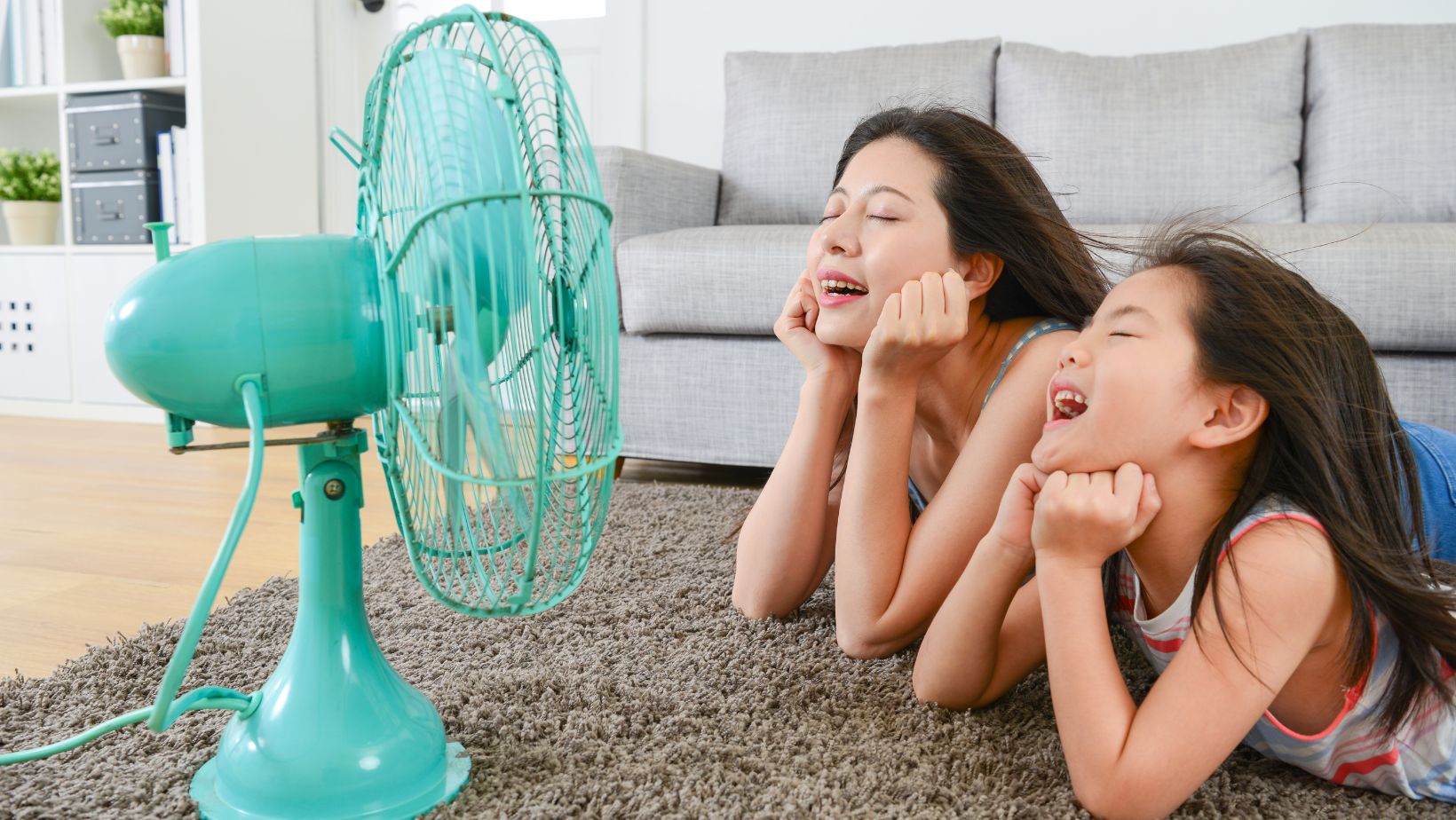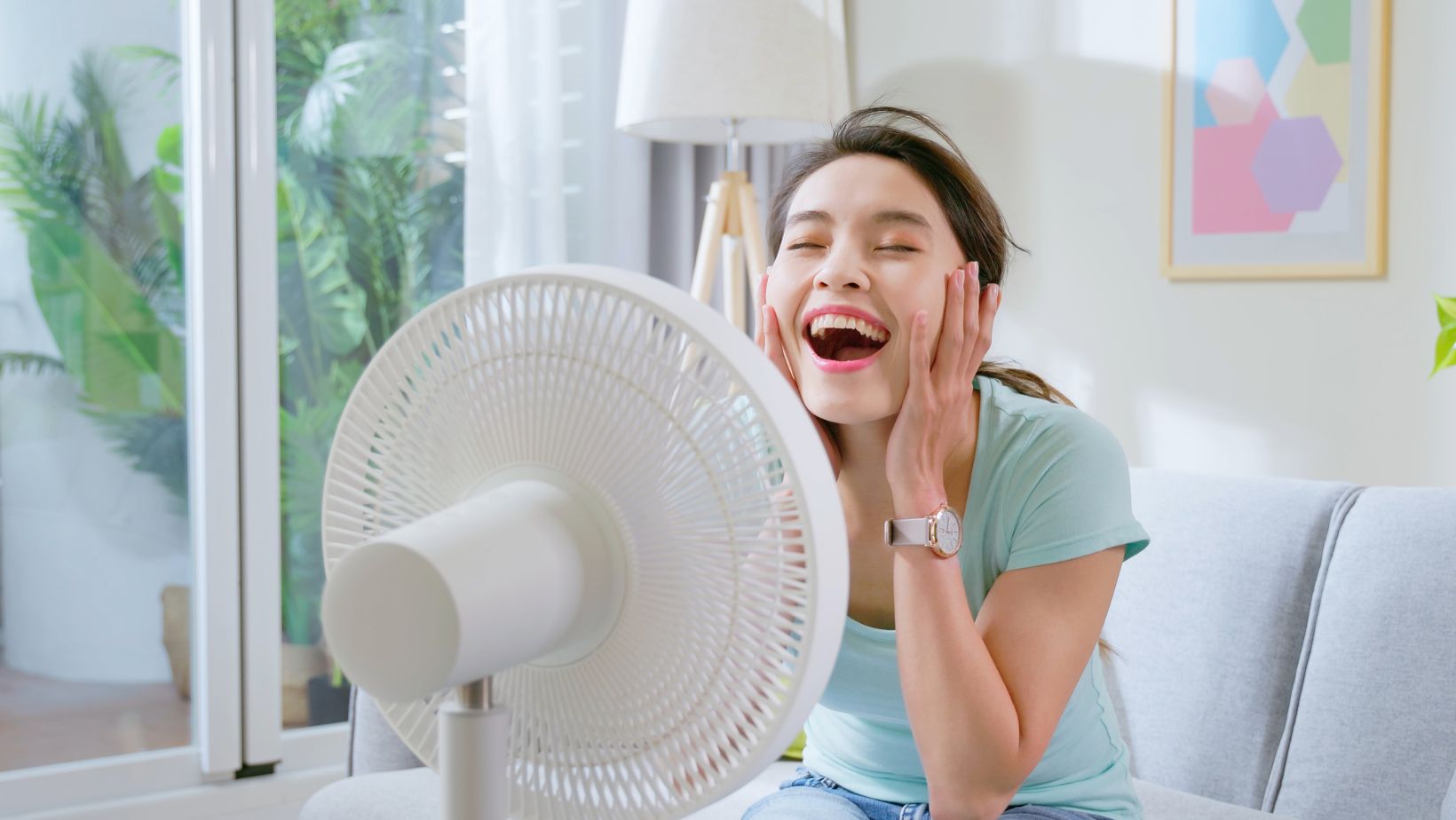
When temperatures climb during summer months, staying cool becomes a top priority. The right cooling equipment can distinguish between suffering through the heat and enjoying the warmer months. Understanding the key differences between fan with mister technology and traditional fans can help you make a better choice for your specific cooling needs.
How Different Fans Work to Keep You Cool
Before comparing these cooling options, it helps to understand how each type works to reduce perceived temperature and provide relief from heat.
Traditional Fans: The Basics
Traditional fans operate on a simple principle: they move air around a space. These fans don’t actually lower the temperature of the air itself. Instead, they create air movement that helps sweat evaporate from your skin more quickly. This evaporation process takes heat away from your body, making you feel cooler even though the room temperature remains unchanged.
Standard fans come in various formats:
- Ceiling fans that provide whole-room circulation
- Pedestal fans that can be positioned where needed
- Box fans for windows or tabletops
- Tower fans with a vertical design for space efficiency
While these fans are effective at creating air movement, they have limitations. In very humid conditions, sweat doesn’t evaporate as efficiently, reducing the cooling effect. Additionally, traditional fans may circulate hot air on extremely hot days, providing minimal relief.
Fan with Mister: Advanced Cooling Technology
A fan with mister combines conventional air movement with evaporative cooling technology. These innovative devices distribute a fine water mist into the airstream, evaporating in the surrounding warm air. This evaporation process absorbs heat energy from the environment, physically cooling the air temperature in the immediate area.
The key components of a fan with mist system include:
- A standard fan mechanism for air circulation
- Water reservoir or connection to a water source
- Specialized nozzles that create ultra-fine water droplets
- Controls to adjust both airflow and mist output
Unlike traditional fans, an outdoor fan with a mister can actually lower the ambient air temperature by 10-15 degrees Fahrenheit in optimal conditions. This temperature reduction, combined with increased air movement, creates a cooling effect that’s significantly more powerful than what standard fans can provide.
Comparing Performance: Fan with Mister vs. Traditional Fan
Several factors, including cooling efficiency, energy consumption, and versatility, come into play when evaluating which option provides better relief during hot weather.
Cooling Efficiency in Different Climates
The effectiveness of both cooling methods varies significantly depending on your local climate conditions.
A fan with a mister demonstrates remarkable efficiency in dry, hot climates like the American Southwest or Mediterranean regions. The low ambient humidity allows water droplets to evaporate rapidly, creating a powerful cooling effect. Users in these areas often report temperature drops of 15-20 degrees in the immediate vicinity of the misting fan.
Traditional fans perform adequately in moderately hot, low-humidity environments but struggle during extreme heat waves. Without the added cooling power of evaporation, they can only provide relief through air movement alone.
The performance difference becomes more nuanced in humid climates like the Southeast United States or tropical regions. Traditional fans still help with air circulation, but provide less relief as humidity rises. A misting fan system can still offer cooling benefits in humid areas, though the temperature reduction won’t be as dramatic as in drier regions.
Many outdoor fans with mist models allow you to adjust mist output or turn off the misting function entirely, providing flexibility as weather conditions change. This adaptability gives them a significant advantage over traditional fans in variable climates.
Energy Efficiency Comparison
Energy consumption is another important factor when evaluating cooling options.
Traditional fans are relatively energy-efficient cooling devices, using far less electricity than air conditioners. Depending on its size and settings, a typical household fan consumes between 30 and 100 watts.
Misting fan systems generally use comparable electricity to power the fan component. The additional cooling comes from the evaporation process, which doesn’t require extra energy. This makes them extremely efficient at cooling relative to the power consumed.
For perspective, a medium-sized fan with a mister might use 80 watts of electricity while providing cooling equivalent to a 1,000+ watt air conditioner in the right conditions. This efficiency translates to lower energy bills during hot summer months when cooling costs typically surge.
Indoor vs. Outdoor Versatility
The environments where each cooling option performs best also differ significantly.
Traditional fans are primarily designed for indoor use, though some models are suitable for covered outdoor areas like porches. They function well in controlled environments but have limited effectiveness in open outdoor spaces where air disperses quickly.
An outdoor fan with a mister is specifically designed to cool open-air environments. These systems excel in patios, decks, pool areas, and yards where traditional cooling methods fall short. The mist created extends the cooled area, making it ideal for outdoor gatherings, barbecues, or relaxing on the patio.
Many people find that a misting fan provides the perfect solution for extending their usable outdoor living space during the hot summer months. Areas that might otherwise be abandoned during peak heat become comfortable retreats with the addition of misting technology.
Practical Considerations When Choosing Between Options
Beyond performance factors, practical aspects like setup requirements, maintenance needs, and overall cost influence the decision between a traditional fan and a fan with a mister.
Installation and Setup Requirements
Traditional fans typically have straightforward setup procedures. Pedestal and tower fans usually require minimal assembly and simply need to be plugged into a standard electrical outlet. Ceiling fans require a more complex installation but are still relatively commonplace.
A fan with the Mister System often needs additional consideration during setup:
- Water supply connection or filling of the reservoir
- Proper placement to avoid unwanted moisture on furniture or electronics
- Appropriate electrical connections, especially for outdoor models
Portable misting fans with self-contained water tanks offer the simplest setup, while permanently installed systems might require professional installation to ensure proper water connections and weatherproof electrical work.
Water Usage and Moisture Considerations
One obvious difference between the options is water usage, which doesn’t apply to traditional fans.
A fan with a mister typically uses between 0.5 and 2 gallons of water per hour, depending on the model and settings. While this amount is relatively small compared to other water uses like lawn irrigation, it’s still a factor to consider, especially in drought-prone areas.
The moisture introduced by a misting fan system is generally not problematic in outdoor settings. High-quality misting systems produce such fine droplets that they evaporate quickly without creating puddles or excessive wetness. However, indoor use requires careful consideration:
- Some compact indoor misting fans use minimal water and are designed for personal cooling
- Larger misting systems are typically not appropriate for standard indoor spaces
- Enclosed areas with poor ventilation may experience increased humidity from regular misting fan use
Proper placement helps ensure the mist doesn’t blow onto areas where moisture is unwanted, such as wooden furniture or electronic equipment, for outdoor applications.
Maintenance Requirements
All cooling systems require some maintenance, but the needs differ between options.
Traditional fans need basic cleaning to remove accumulated dust from blades and grills, usually a few times per season. Some models have removable grills that make this process easier.
A fan with a mister requires additional maintenance steps:
- Regular cleaning of the mist nozzles to prevent mineral buildup
- Emptying and cleaning water tanks in portable models
- Seasonal maintenance, including complete system drainage in colder climates
- Periodic replacement of filters in systems that include water filtration
Using distilled or filtered water in your fan with a mister can significantly reduce mineral deposits and extend the system’s life. Many manufacturers also offer cleaning solutions specifically designed to remove calcium and other minerals from misting nozzles.
Additional Benefits Beyond Temperature Control
Both cooling options offer advantages that extend beyond simply lowering the perceived temperature.
Air Quality Improvements
Traditional fans circulate air, which can help prevent stagnation in indoor spaces. However, they can also stir up dust and allergens, potentially aggravating respiratory issues for sensitive individuals.
A fan with mist often provides air quality benefits. The water droplets can help capture airborne dust particles, pollen, and other allergens, effectively cleansing the air as it cools. This natural air purification effect makes misting fans a popular choice for people with allergies or asthma who want to enjoy outdoor spaces during high pollen seasons.
Some advanced fans with Mister models even allow for the addition of essential oils or insect repellents to the water, creating functional aromatherapy or bug control along with cooling.
Humidity Control Benefits
In extremely dry climates, traditional fans can sometimes exacerbate dry air conditions, leading to problems like dry skin, irritated respiratory passages, and static electricity.
A misting fan adds moisture to the environment while cooling, which can be beneficial in arid climates. This added humidity helps balance extremely dry conditions, creating more comfortable breathing conditions and reducing problems associated with excessively dry air.
This humidity-balancing effect makes misting fans particularly valuable in regions that experience hot, dry weather for extended periods. Many users report improved comfort not just from temperature reduction but also from the more balanced humidity levels.
To Sum Up: Choosing the Right Cooling System
When deciding between a traditional fan and a fan with a mister, there’s no one-size-fits-all answer. The right choice depends on your specific climate, the spaces you want to cool, and your personal preferences regarding maintenance and moisture levels.
An outdoor fan with mister clearly outperforms traditional options in hot, dry climates, especially for outdoor spaces. The actual temperature reduction achieved through evaporative cooling provides relief that standard air movement alone cannot match.
Traditional fans often remain the practical choice for everyday cooling for indoor use in most homes, perhaps supplemented with air conditioning during extreme heat. However, the addition of a misting system for your patio, deck, or other outdoor living areas can dramatically extend your comfortable outdoor time during hot weather.
Many households find that the optimal solution includes both options: traditional fans for indoor use and misting systems for outdoor spaces. This combined approach provides efficient cooling throughout the entire living area while effectively managing energy costs and maintenance requirements.








